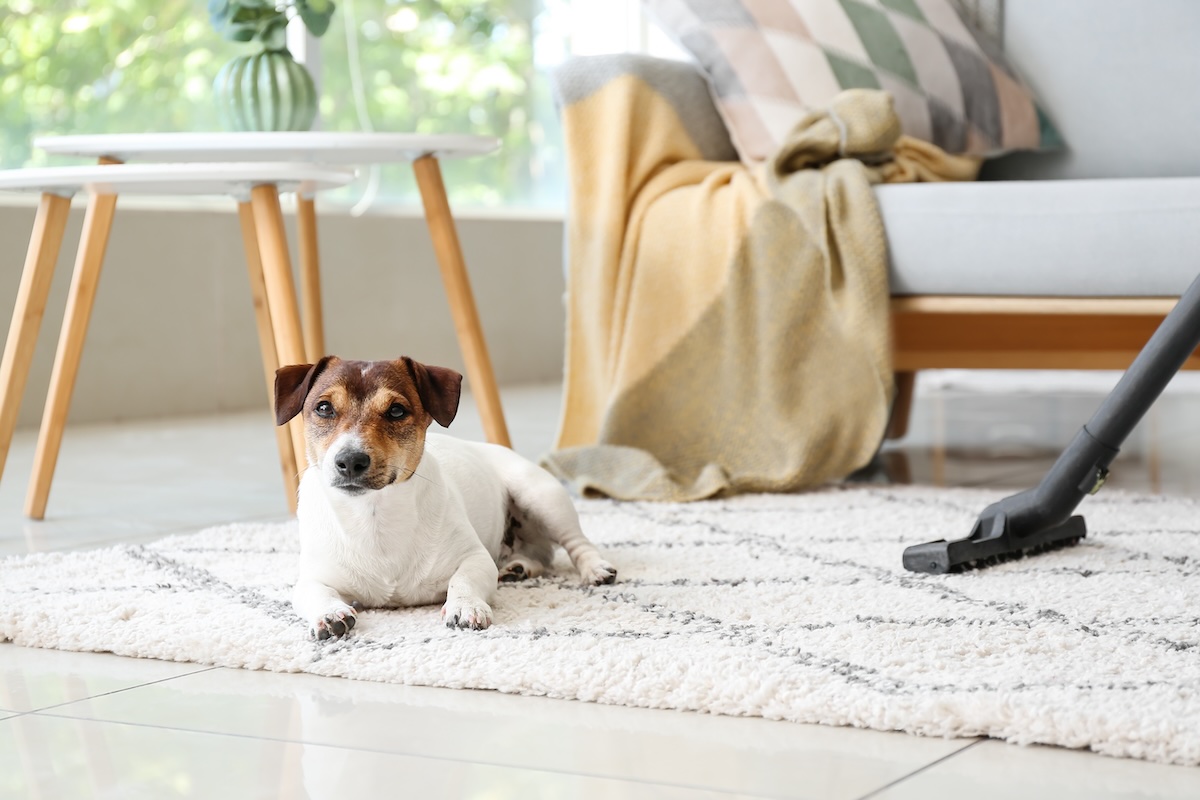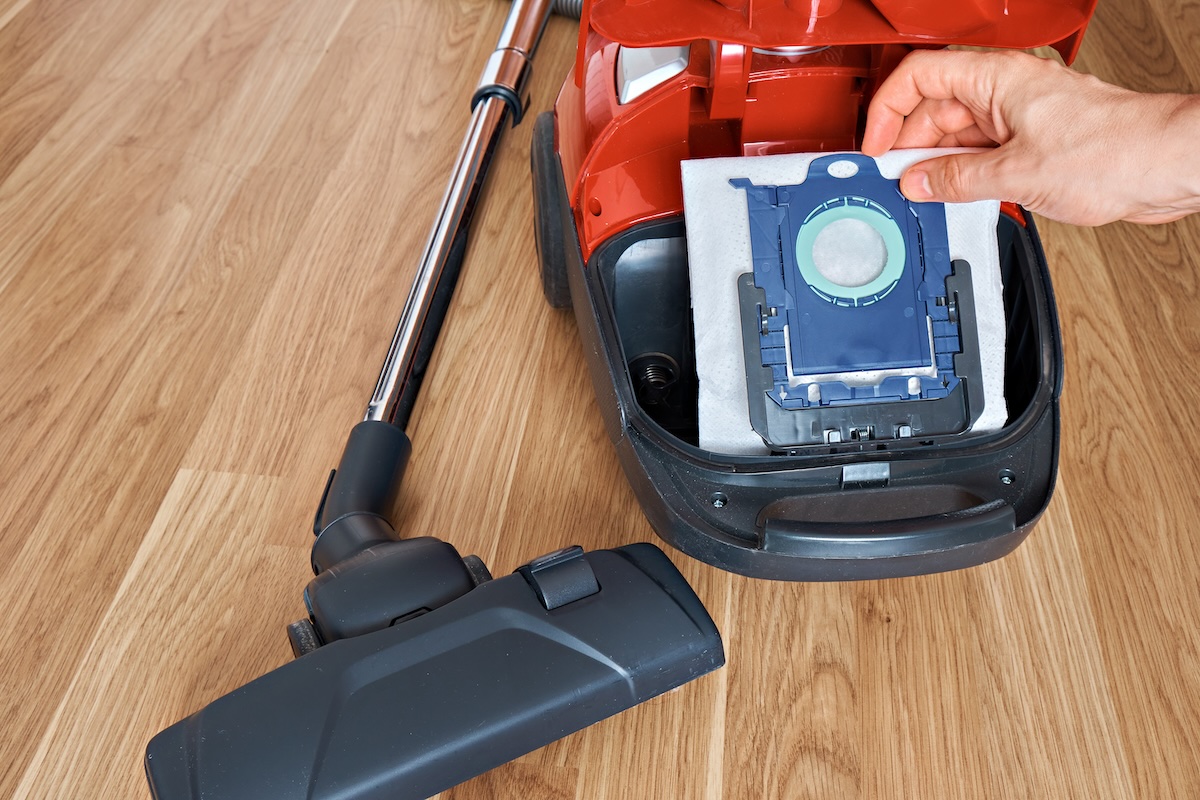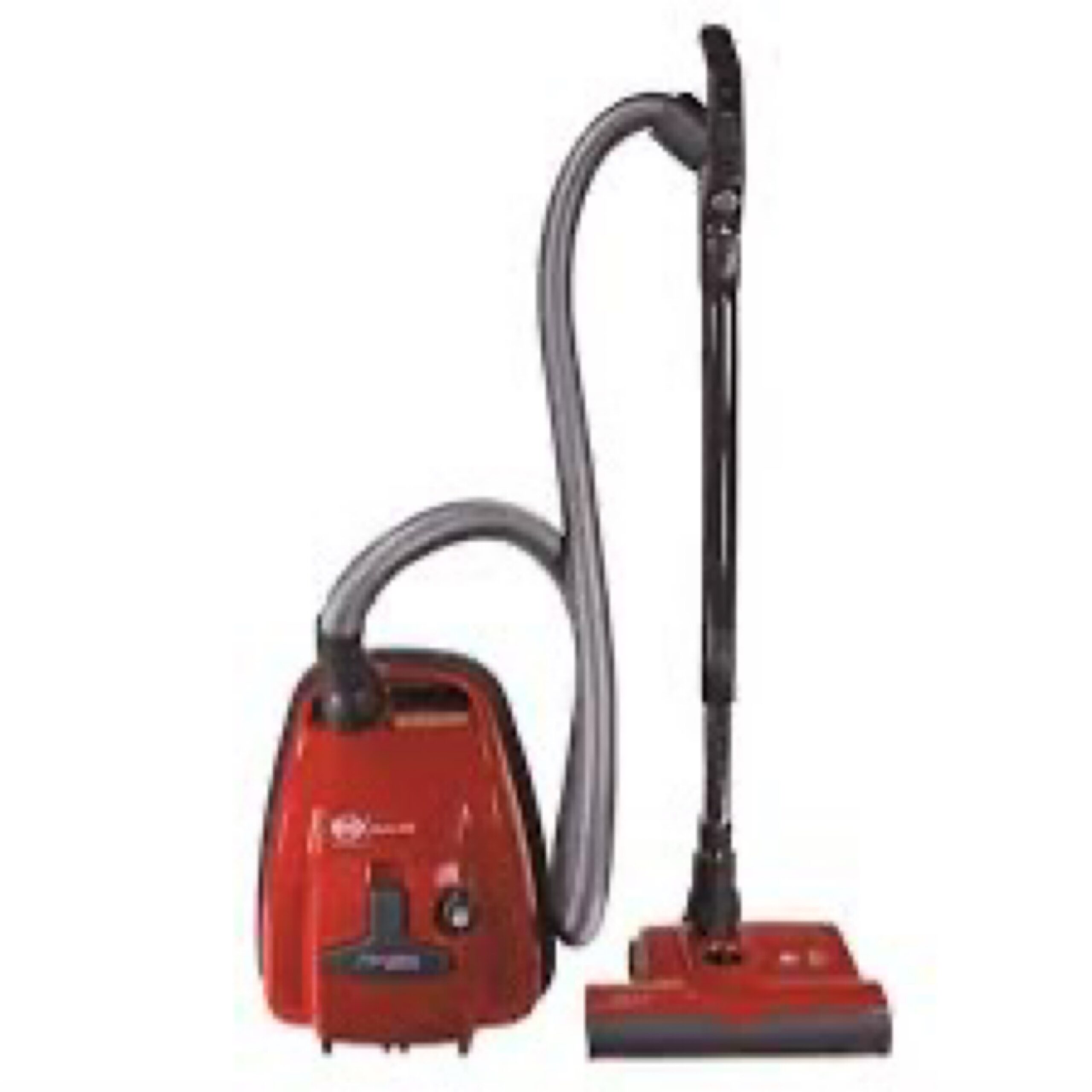When you’ve got pets, your vacuum isn’t just for “dust”—it’s battling fur, dander, muddy paw prints, and mystery fluff clusters that weren’t there ten minutes ago.
Whether it’s a golden retriever who sheds like it’s his job or a curious cat who loves knocking over the litter box, your cleaning routine needs backup.
But which vacuum type actually handles pets best—upright or canister?
Let’s run down what matters most when choosing a pet-friendly vacuum, and how different types of vacuum cleaners stack up against each other for daily use in a home with pets.
Table of Contents
Toggle1. Suction Power Is Extremely Important for Pet Hair
Not sure where to start? While suction and filtration are key, not all vacuums get them right. Brands known for strong sealed systems and reliable performance with pet hair include upright or canister vacs from SEBO, Miele, Riccar, and Dyson. Each has its strengths—some excel on carpets, others on filtration or versatility—so it’s worth comparing features based on your home layout and pet type. The goal isn’t to chase a name, but to find a machine built for your real-life cleaning needs.
Pet hair doesn’t just shed—it weaves itself into your home like it pays rent. You’ll find it clinging to carpet fibers, tucked deep into upholstery seams, floating across hardwood like tumbleweeds, and curling into the corners you forgot existed.

And once it settles in, weak suction doesn’t stand a chance. You need real pulling power—strong, consistent suction that holds steady across multiple surfaces and cleaning sessions.
This is where vacuum type really starts to matter.
Upright vacuums tend to deliver stronger raw suction on carpeted surfaces, especially when equipped with a motorized brush roll. That combination allows the vacuum to not only pull up loose debris but also agitate the carpet to dislodge hair, dander, and embedded grit that’s settled deep into the fibers. If you’ve got wall-to-wall carpeting or area rugs where your pets spend most of their time, an upright is often the fastest, most effective way to restore them.
On the other hand, canister vacuums excel when it comes to edge cleaning, stairs, and more delicate surfaces like hardwood, baseboards, drapes, or fabric furniture. Their lighter, wand-based designs give you more precision and reach, but their suction performance varies more dramatically depending on the brand, model, and the type of cleaning head attached.

A high-end canister vacuum with a powered brush tool can absolutely match (or even beat) many uprights, but a lower-tier model might struggle to maintain consistent airflow—especially over dense carpets or pet-laden upholstery.
Pro tip: No matter which type you lean toward, one of the most overlooked features that makes a massive difference in real-world performance is a sealed vacuum system. Sealed systems channel air through a controlled pathway, ensuring suction is focused and uninterrupted—and just as importantly, they prevent allergens, fine dander, and dust from leaking back into your home’s air. If your pets shed heavily or trigger allergies, this feature goes from “nice bonus” to “must-have.”
Bottom line? Suction specs alone won’t tell you everything—but they’re a great starting point. Combine strong suction with sealed filtration, and you’ve got a vacuum that doesn’t just pick up pet hair—it helps keep your whole home cleaner and healthier.
2. A Motorized Brush Head Is Essential

Static suction alone won’t cut it when it comes to pet hair. You need agitation—real, mechanical agitation—to dislodge the stubborn strands that settle deep into carpet fibers, wedge themselves into upholstery seams, and cling to rugs like they were stitched in.
Pet hair isn’t just lying there waiting to be vacuumed—it’s wrapped around threads, tangled into loops, and often pressed down by the weight of everyday foot traffic.
Check if the vacuum you’re considering has:
- Motorized heads (not just air-driven brushes) lift embedded hair from carpet and upholstery.
- Many canister vacuums come with motorized tools, but not all—so double-check before you buy.
If you’re mostly dealing with carpet and rugs? Upright. If you’re dealing with stairs, furniture, and floors? Canister with a motorized head.
3. Consider Your Pet’s Size and Hair Type
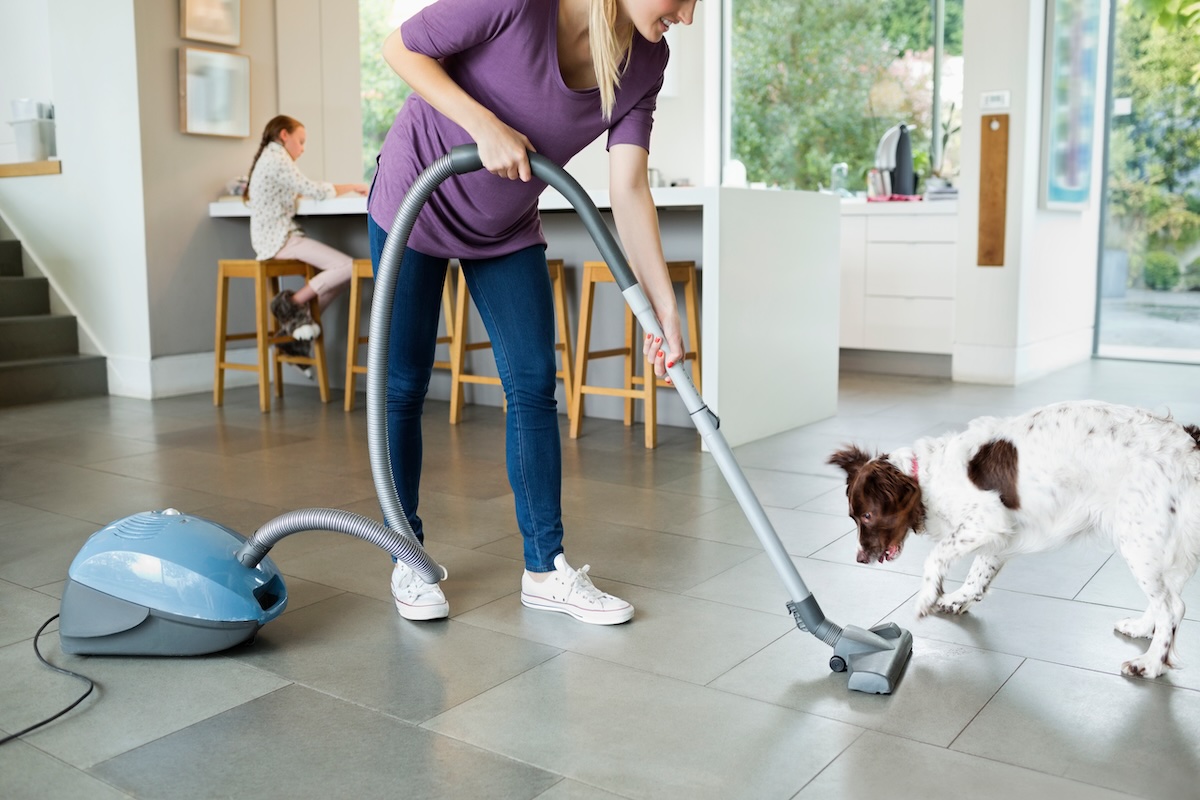
Not all pet hair is the same—and neither are the vacuums designed to deal with it. The type of pet you have, the length and texture of their coat, and even how they move through your home can all influence what features you actually need in a vacuum. So before you default to the highest suction rating or the fanciest attachment set, take a moment to think about your specific pet situation.
Dogs
Short-Haired Breeds
Don’t let the sleek coat fool you—short-haired dogs and cats are often some of the biggest culprits when it comes to fine, powdery dander. These pets may not leave behind dramatic tumbleweeds of fur, but what they do shed gets into everything. Fine particles settle deep into carpet and fabric, cling to furniture, and drift through the air long after you’ve cleaned.
If you live with short-haired pets, your top concern probably isn’t just visible hair—it’s invisible allergens. That’s why filtration becomes the number one priority. Look for vacuums that offer:
- HEPA-grade filters capable of trapping ultra-fine particles
- Sealed systems to prevent allergens from escaping
- Multi-stage filtration for added peace of mind
Upright or canister can work here—but if you’re dealing with allergies or respiratory sensitivity, don’t skimp on air quality features. Clean floors are great, but clean air is what makes your home feel noticeably healthier.
Long-Haired or Double-Coated Breeds
If you’ve got a golden retriever, husky, collie, or even a high-maintenance mixed breed with a thick coat, then you already know: shedding season is not a season—it’s a lifestyle. These pets can leave trails of fur on every surface they touch, and that fur tends to mat, wrap around brush rolls, and clog up filters faster than you’d expect.
In this case, the vacuum you choose needs to be a workhorse:
- Look for wide cleaning heads that cover more ground per pass
- Opt for vacuums with anti-tangle or self-cleaning brush rolls to reduce maintenance headaches
- Check the bin capacity and ease of emptying—because you’ll be filling it a lot
This is where upright vacuums really shine. Their larger cleaning paths and direct-drive brush systems can power through pet fur on high-pile carpets and large rugs without choking up or overheating. That said, if your home has stairs or mixed flooring, a high-powered canister with a motorized pet tool can still be a strong contender.
Cats (Especially Anxious or Sensitive Ones)
Cats are a different story altogether. They shed, sure—but they also jump on counters, lounge across windowsills, and tiptoe over every surface in your home. They’re also much more sensitive to noise, motion, and disruption.
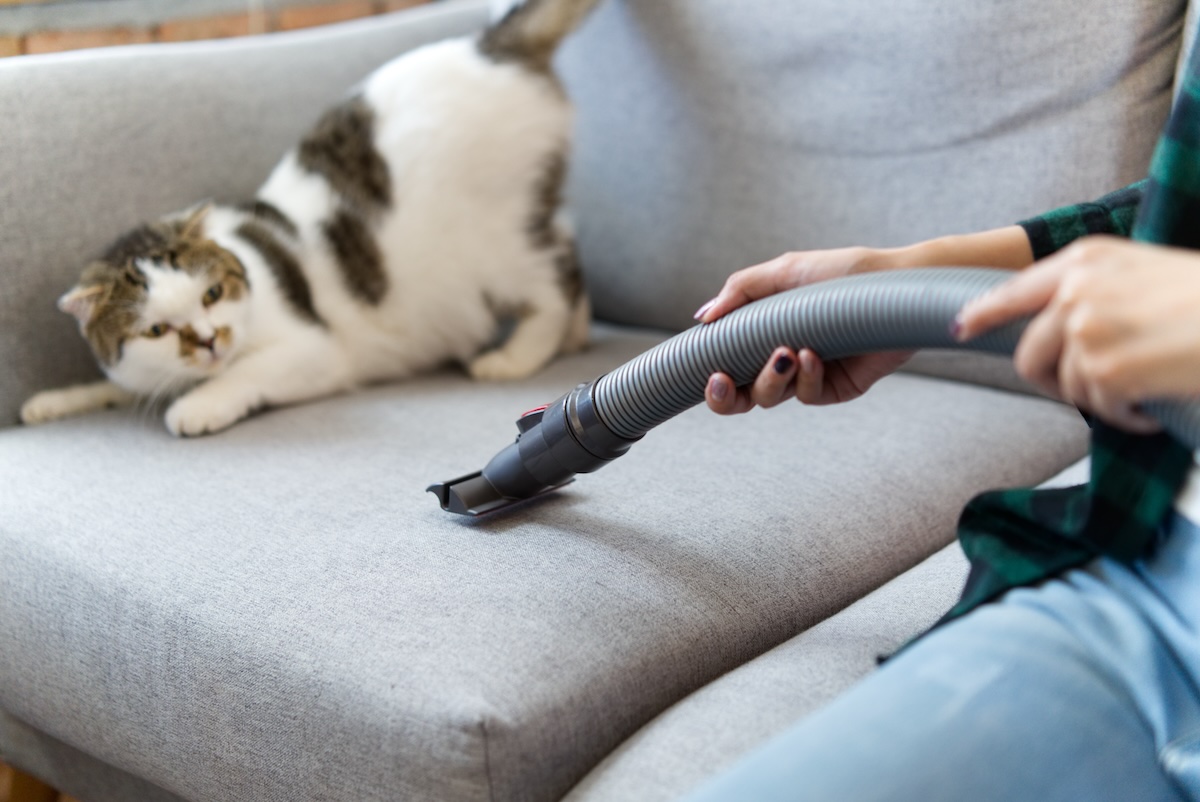
If your cat vanishes the second a vacuum clicks on, that’s not a coincidence—it’s the sound, the vibration, and the movement.
When choosing a vacuum for a cat-friendly household, it’s about stealth, agility, and control:
- Choose models known for quiet operation—canister vacuums tend to be much quieter than uprights
- Look for soft-bristle tools and mini motorized heads for furniture and small rugs
- Go for vacuums that are easy to maneuver around tight spaces like under beds and behind furniture
Bonus: Canisters also let you clean elevated surfaces like cat trees, window blinds, and upholstery without the awkward balancing act you get with an upright. And if your cat has allergies or asthma—a real concern for certain breeds—filtration and sealed containment are again essential.
4. Hair Wrap Is a Real Problem—Choose Smart Tools
Long hair (yours or your pet’s) can tangle around the brush roll and reduce cleaning power fast.
Look for vacuums with:
- Anti-hair wrap brush rolls
- Tangle-free turbine tools
- Easy-access brush heads for cleaning
Some premium uprights and canisters now include self-cleaning heads specifically made with pets in mind.
5. Don’t Sleep on Filtration
Pets bring allergens with them, even the hypoallergenic ones.
Go for:
- True HEPA filters
- Sealed bodies
- Washable filters if you want lower maintenance costs
If your pet sleeps in the same room as you (let’s be real—they do), this feature becomes even more important.
6. Upright vs. Canister for Pet Owners: A Quick Rundown
| Situation | Upright Wins | Canister Wins |
| Carpeted rooms | ✅ | ✅ (if equipped) |
| Upholstery and stairs | — | ✅ |
| Storage simplicity | ✅ | — |
| Whole-house agility | — | ✅ |
| Budget-friendly power | ✅ | — |
| Best for dander control | — | ✅ (usually better filtration) |
| Quiet operation | — | ✅ |
Final Thought: Make It Fit Your Routine

If vacuuming is a once-a-week sprint across carpeted floors, an upright with a strong motor and good attachments will serve you well.
But if you’re constantly cleaning behind couches, doing stairs, or trying to beat shedding season, a canister with the right tools may be your long-term sanity-saver.
Still Not Sure? Let’s Talk Pet Hair in Person
If you’re in the Greater Nashville area, stop by Edison Vacuum at 202 Wilson Pike Circle Brentwood, TN 37027, and tell us about your furry situation. We’ll match you with the vacuum that fits your floors, furniture, and fur levels—without trying to sell you something that’s not built for the job. Give us a call at 615-255-3292 or click here to contact us.

